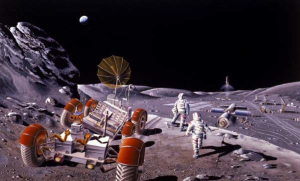Extreme Environment Workshop: Design for Survival -- Where and When it Matters Most
Take part in an interdisciplinary undergraduate/graduate level course which explores urgent habitation challenges which are both common and unique to various Earth and space environments. Investigations and discussions will address issues that include:
- Shelter planning requirements, construction types and design options.
- Approaches and accommodations to optimize human safety and performance under difficult and hazardous circumstances.
- Systems and technologies to maximize energy economies and minimize logistical resupply operations.
- Environmental safeguards to protect fragile ecosystems during and following habitat development and operations.
- Arctic, Antarctic, Subsea, Desert, Mountain, Oceanic, In-Transit Space, Lunar Surface, Martian Surface, etc.
ARCH 6397 or ENGI 6397
Architecture Building, Room 367 Tuesdays, 6:00 - 9:00 PM. 3 Credits
Instructor: Prof. Larry Bell (COA and COE/SICSA Faculty Member)
Invited Speaker: COE/ME Professor Bonnie J. Dunbar, Retired Astronaut
Professor Larry S. Bell
College of Architecture with Tenure
SICSA Program Professor
Gerald D. Hines College of Architecture
University of Houston,
Houston TX 77204-4000
Tel: 713 743 5251 Fax: 713 743 5256
E-mail: lbell [at] uh.edu (lbell[at]uh[dot]edu)
Larry Bell is a Professor of Architecture and holds the endowed Larry Bell Professorship in Space Architecture. He founded the University of Houston’s Sasakawa International Center for Space Architecture, SICSA, program in 1987 with an endowment from the Nippon Foundation, and from 2003-2014 was Director of the MS-Space Architecture Program, the only such degree program in the world.
Professor Bell received a B.S in Architecture and MFA-ID degrees from University of Illinois, Urbana-Champaign (UIUC) and directed the UIUC Industrial Design graduate program for 8 years. He has served on the national IDSA Board and as a Contributing Editor for the Industrial Design Magazine. Professor Bell was responsible for helping to found the UH College of Architecture Industrial Design program.
During the 1980’s Professor Bell also co-founded Space Industries, Inc, with former NASA Chief Engineer, Dr. Max Faget and entrepreneurs James Calaway and Guillermo Trotti. Space Industries Inc. was a private company that grew to employ more than 8,000 professionals and flew various experiments into Low Earth Orbit (LEO). SII designed the Industrial Space Facility (ISF), a man-tended microgravity research facility which, although it didn’t fly due to government funding uncertainties, provided visionary design processes and applications for the current International Space Station (ISS) and provided a new commercial model for space development. SII later teamed with the University of Houston Center for Advanced Materials to develop and fly the Wake Shield Facility (WSF) from the Space Shuttle. WSF flew on three space shuttle flights (STS-60, STS-69, and STS-80), growing epitaxial films for semiconductor applications.
Bell and SICSA are well known throughout the world for their concepts and contributions in planning and design of habitats in space and other extreme environments. As Director of SICSA, he led research projects which have supported designs for habitats and stations on the Moon and Mars, the design of orbiting Space Stations, design concepts for the Houston Space Port, structures designed for glacial survival, and feasibility studies for aerospace projects involving organizations such as the Boeing Company and the National Aeronautics and Space Administration (NASA).
Professor Bell has authored dozens of technical articles and publications, and has been featured along with his work in many prominent national and international newspapers and magazines and television programs. Results of these activities have been widely broadcast in the US and international media. Included are featured presentations in the History Channel, the Discovery Channel, PBS, BBC’s TV World Business Report, NASA Select, NEC-Japan, Radio Moscow, Time Magazine, the Christian Science Monitor, and the New York Times, among others. Forbes Magazine recently featured Bell in their 2013 series of “Thought Leaders.”
He serves on the Board of Directors and Executive Committee of Space Week International which organizes events attended by many thousands of people each year to celebrate and promote space progress. He is an Associate Fellow of the American Society of Aeronautics and Astronautics (AIAA), and is a Fellow of the prestigious Explorers Club. He is also a contributing author to Forbes Magazine.
Professor Bell received the Technical Educator of the Year Award presented by the Clear Lake Council of Technical Societies at the NASA Space Center in September, 2003. He is also a recipient of two of the three highest honors awarded by the Federation of Astronautics and Cosmonautics of the former U.S.S.R.: the Yuri Gagarin Diploma, and the Konstantin Tsiolkovsky Gold Medal. Bell's name was even placed in large letters on the proton rocket that launched the first crew to the International Space Station. He also received the Space Pioneer Award from Kyushu Sanyo University in Japan, Final Frontier Magazine selected him as one of the “Magnificent Seven of Space”. Professor Bell has also founded several non-profit professional and philanthropic organizations.
